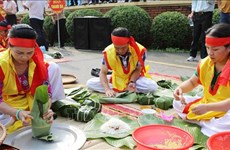Nom – unique ancient village in Hung Yen province
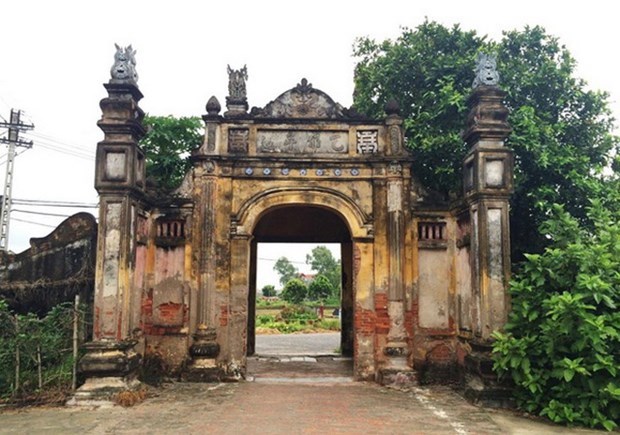 Nom village's gate (Photo: VietnamPlus)
Nom village's gate (Photo: VietnamPlus)Hung Yen (VNA) – Nom, an ancient village in Dai Dong commune, Van Lam district, the northern province of Hung Yen, offers a mystical atmosphere with a complex of ancient relics including a village gate, a well, a communal house, a pagoda, ancient homes, and especially a stone bridge. All of these are almost completely intact after hundreds of years.
Only 30km from Hanoi, Nom village is a typical image of a northern rural village in Vietnam, featuring banyan trees, ponds and communal houses. It’s also famous for its ancient houses which are around 200 years old and still feature their typical architectural structures.
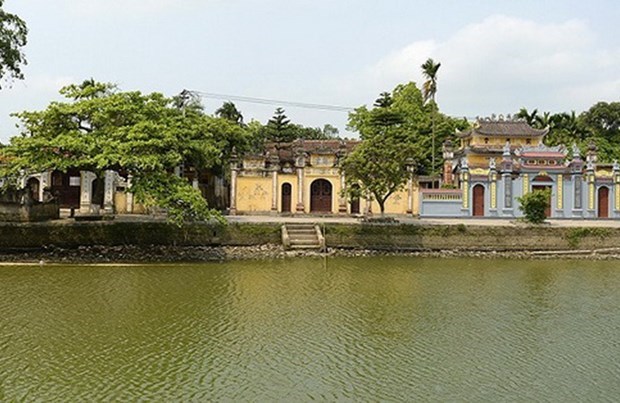 A pond in Nom village (Photo: VietnamPlus)
A pond in Nom village (Photo: VietnamPlus)From Hanoi, visitors can take National Highway No. 5 to reach the village. Right from the village’s main gate, it’s easy to spot the communal house, market, pond, stone bridge and many other architectural works that date back 200 years.
Nom village is a convergence of many interesting things. Pham Van Hieu, deputy head of the provincial Department of Culture, Sports and Tourism, said that the village gate was built in 1855, in the shape of an octagon with delicate motifs only appearing in localities that the royal family’s members lived in. The village was granted such a privilege as it owned exquisite copper casting and had casted coins for the Nguyen Dynasty.
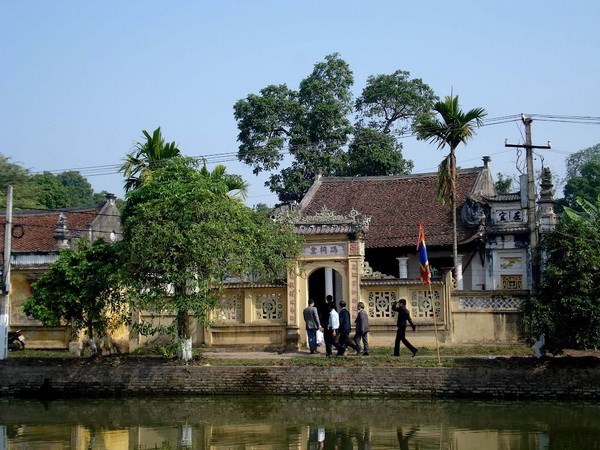 An ancient house next to the village's pond (Photo: VietnamPlus)
An ancient house next to the village's pond (Photo: VietnamPlus)Located in the middle of rice fields and green gardens, a peaceful and quiet space of Nom village is wide open to visitors’ eyes as they walk through the village gate. Perhaps it is one among a number of rare villages that still keep the familiar sights from the past to the current day. It features a jade green pond in the centre of the village, and on each side they have elderly of the community sitting on stone benches next to their chess boards. At the end of the pond is the communal house and the old banyan tree where local children swing on the tree’s roots.
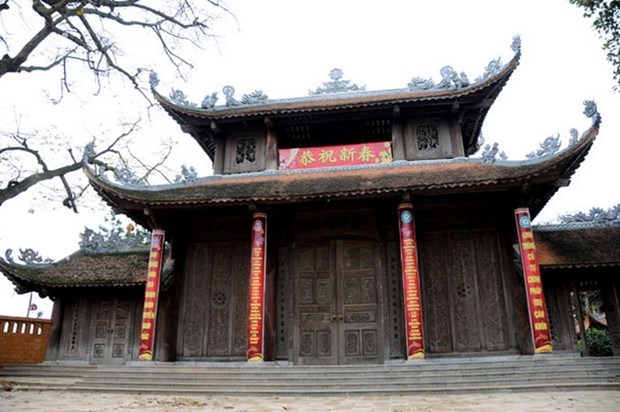 Nom Pagoda (Photo: VietnamPlus)
Nom Pagoda (Photo: VietnamPlus)Along the two sides of the pond are rows of areca trees and old houses, including residential houses and ancestral temples of the local clans. According to the deputy head of Hung Yen Department of Culture, Sports and Tourism, Nom village still retains nine ancestral temples of the Nguyen, Le, Phung and Ta families that are still intact, with typical architectural styles from around 100 years ago. Many old houses still keep tier intricate and sophisticated details and decorative motifs in a natural manner. These ancient houses connected by the pond have created a unique feature that is rarely seen even in other northern villages.
At the end of the pond is the village’s communal house, which is said to worship Saint Tam Giang, a general from the era of the Trung Sisters (AD 12-43). Legend has it that before he died, Saint Tam Giang wrote in his will to be buried in Nom village, where he was once stationed. It is known that the banyan tree inside the communal house is nearly 100 years old.
 Nom temple (Photo: VietnamPlus)
Nom temple (Photo: VietnamPlus)In front of the pagoda is the Nom market with a special ancient architectural style built in separate rows that make people feel like they’ve been taken back hundreds of years.
Nom village also has a special stone bridge made by craftsmen, with nine spans and slate on its face. Each head of its piers is carved with sophisticated patterns.
As one of the few places still keeping intact the typical scenery of the northern countryside, Nom villagers not only preserve the ancient works of the whole village and each local families and clans, but also are still very conscious in preserving the village’s clean and green environment.
On January 7, 2020, the Ministry of Culture, Sports and Tourism issued a decision recognising Nom village as a national historical-architecture relic site./.













